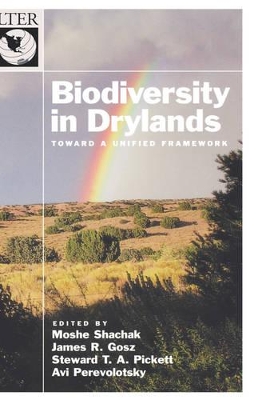The Long-Term Ecological Research Network
1 total work
Biodiversity in Drylands
by Moshe Shachak, Stewart T. A. Pickett, James R. Gosz, and Avi Perevolotski
Published 6 January 2005
This is the first international volume in the Long Term Ecological Research Network series. The book summarizes the state of knowledge about biodiversity in drylands, and seek to identify questions and strategies for future research and to lay out guidelines for management of biodiversity in desert and semidesert regions. The continuing sensitivity of drylands to desertification, the fact that they occupy 40% of the world's terrestrial area, and the increasing human populations in these regions, make the understanding of their biodiversity and its changes over time of central importance. Drylands also provide a natural laboratory to address general questions about biodiversity, ecological succession, etc., because the relative spareness of the landscape allows one to isolate all the variables more effectively than can be done in biologically "richer" terrains. This book brings together leading workers, primarily from the U.S. and Israel, with some European scientists, to develop an integrative synthesis of perspectives on biodiversity in drylands, considering work from multiple regions and investigations focussing on multiple levels of ecological analysis. Each chapter was written by a small team of investigators from different institutions and having experience in different systems. Each chapter team combines at least two ecological perspectives, for instance, population and ecosystem, or species and landscape.
